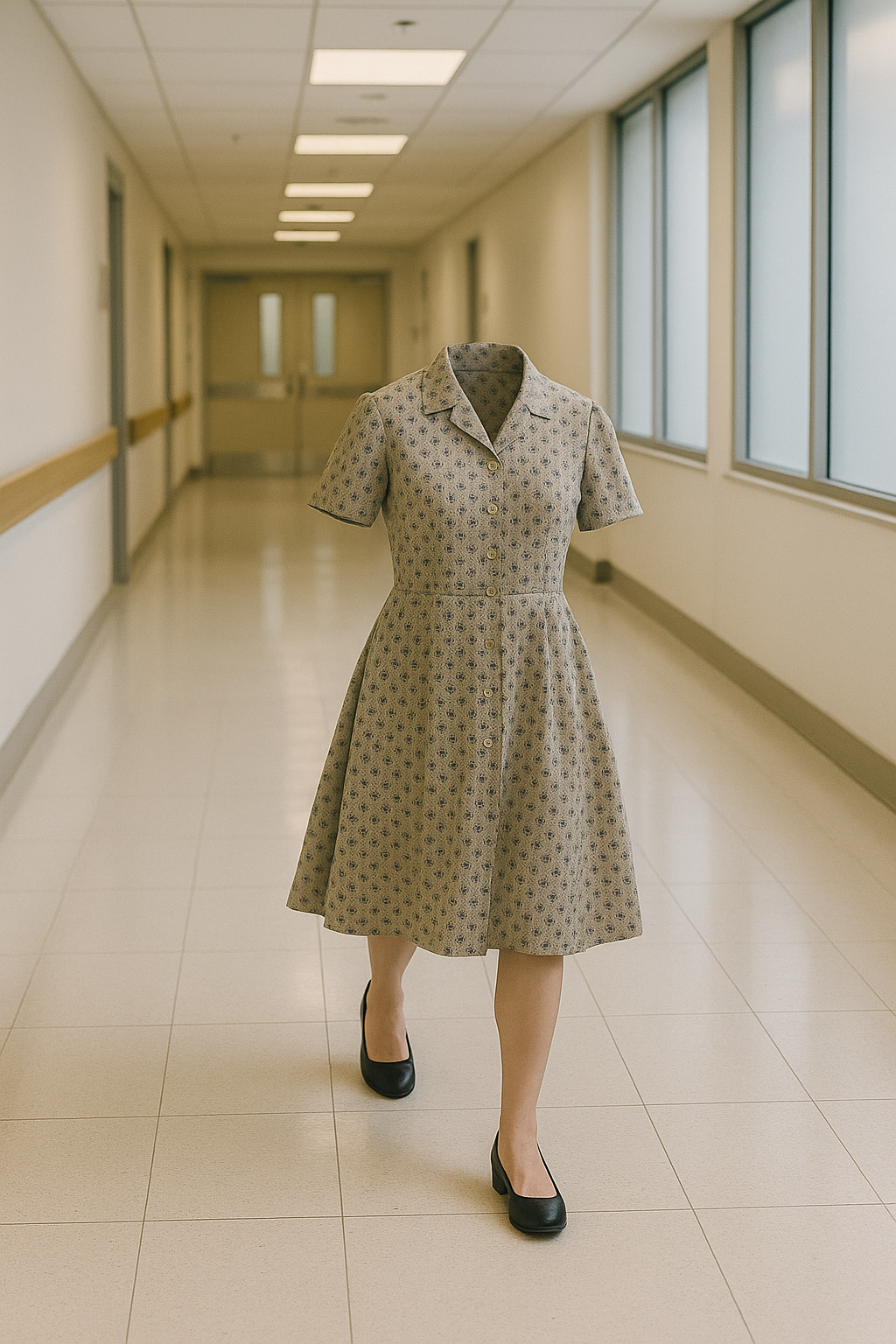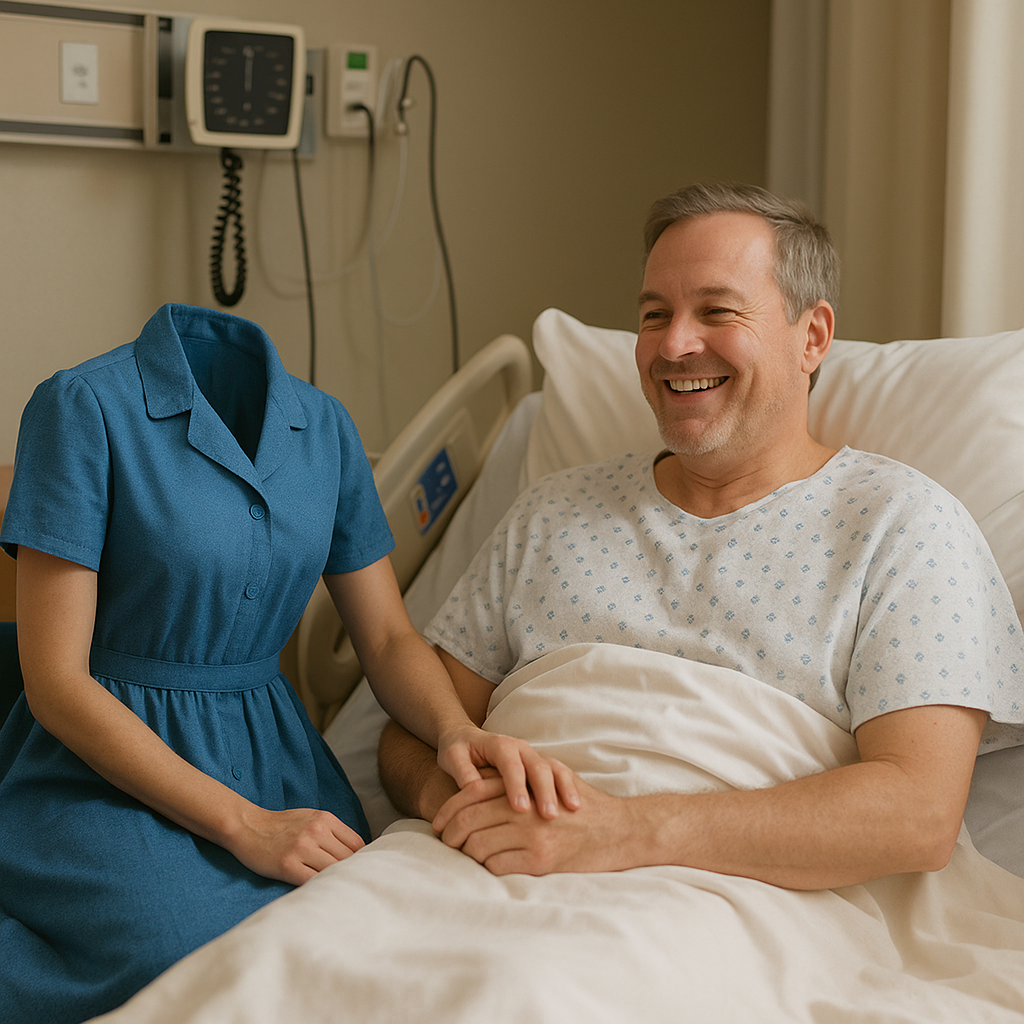For this creative practice, I began with a simple concept: How does my clothing actually function in the hospital? I have long noticed that when I wear business casual, my patients turn me down more often. When I wear my dresses, the response shifts. So I started by creating the first image through AI as I wanted to create a series of pictures that gave a clearer picture of what patients see. I started wit my dress in a patient room — hoping to see what my patients see. At first, it didn’t offer much clarity. It felt still, almost neutral.
But as I continued generating images, placing faceless “figures” in different roles — a surgeon, a nurse, an administrator — the project changed. The more I removed the human features and left only uniforms, the more I found myself slipping into an unexpected role: the patient. Suddenly, I wasn’t creating scenes — I was inside them. I felt that rising panic of trying to understand who was caring for me based solely on clothing and posture. There were no people, only categories.
This was the moment of introspection that shifted everything. I realized: my patients often see the same thing. They interpret roles, not individuals, because the uniform speaks before the person can.
Seeing my own dress among these faceless clinical figures made its role startlingly clear. My clothing interrupts the hierarchy. It softens the environment. It signals that I am not a threat — that I am something familiar, warm, and human.
Through this process, I learned that my clothing is not just part of my identity. It is part of the communication that shapes how patients experience safety, trust, and care.







